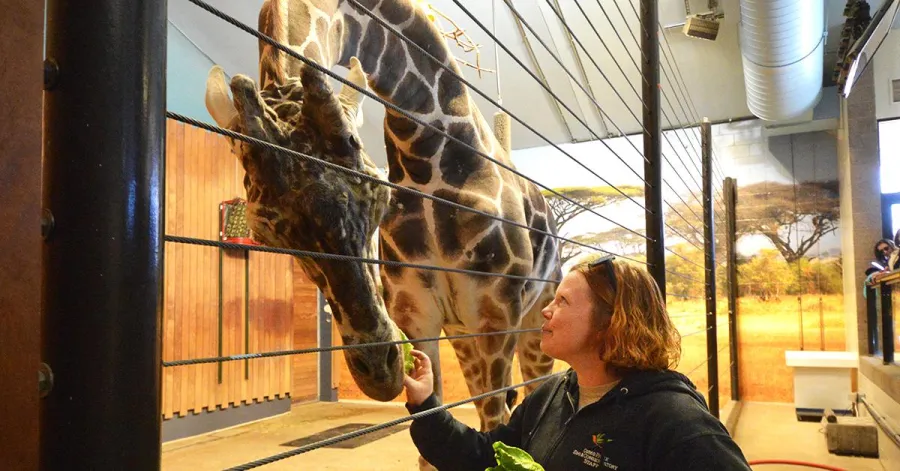Jill Erzar: Minnesota's Ambassadors to the Natural World

Some people have wild stories about their coworkers. Jill’s, though, are unique.
Jill Erzar is a zookeeper at Como Zoo in St Paul. Her coworkers are giraffes, bison, reindeer, kudu, zebra, and other hooved animals of all shapes and sizes.
Growing up, Jill always loved animals. She considered becoming a veterinarian, and was studying animal health in college before she took an internship at Como Zoo.
“By Day Two, I was a goner,” Jill said. “I knew this was what I wanted to do.”
After graduating, though, making that dream a reality was a challenge. She took zookeeper jobs around the country but struggled to make ends meet.
The average salary for a zookeeper in the US is just $28,000 a year. In Jill’s case, even taking a top job as a supervisor only netted $30,000 a year. This meant she had to work two, sometimes three jobs to pay her bills while pursuing her passion.
“It was rough,” said Jill. “I used to work as a bartender – I’d close down the bar at 4 am, then I’d open the zoo at 8 the next morning.” At the time, Jill worked with large cats. Needless to say, dealing with lions and tigers on less than three hours of sleep is not ideal.
But through the difficult times, Jill’s love for animals, and the families who came to visit them, kept her working in the field. “The best thing is seeing a kid’s eyes light up the first time they get to feed a giraffe – it’s incredible,” said Jill. “Our most important role as zookeepers is teaching kids about animals and being their ambassadors to the natural world.”
Life changed for Jill when she was hired at the place where her passion for zookeeping started – Como Zoo. Jill made enough money to finally make zookeeping her primary focus.
I can put all of my energy into my zoo work,” said Jill. “I’m not exhausted, which means I’m safer. I feel like a weight is off my shoulders, and I can focus on why I’m here.”
Minnesota has two of the most prestigious, and high-paying, zoos in the county: the Minnesota Zoo, and the Como Zoo. Both zoos depend on investments from millions of taxpaying Minnesotans who keep the doors open – for free, in Como Zoo’s case.
On the first sunny day of the season, Jill weaved through dozens of families as she made her usual rounds through the hoof barns. Nearly thirty kids crowded close and squealed as one of the zoo’s prime attractions, a giraffe named Skeeter, ate a head of romaine lettuce from Jill’s hand.
For Jill, this is what makes Como Zoo unique – all families, regardless of their ability to pay, can visit. After a decade of work in the field, Jill knows how rare a free, publicly funded zoo is.
“Kids around the world don’t have what we have,” she said. “Even in countries where these animals are native, regular people can’t afford entrance into the nature preserves where the animals live. They don’t have a Como Zoo in Tanzania.”
Decades of investment gives Minnesotans access to a priceless treasure: an understanding of the world around them. But without sustained, committed funding, we could lose our zoos – and the hundreds of other state-funded institutions that make Minnesota one of the best places in America to raise a family.
Right now, the Minnesota Legislature is debating the State and Local Government Omnibus Bill in conference committee. The DFL-controlled House passed a budget that adequately funds the institutions and services Minnesota deserves, while the GOP-controlled Senate’s bill would gut them.
Funding state and local government isn’t just about the institutions it serves: it’s about making Minnesota a better, brighter, more prosperous place – for all of us. Minnesota needs a budget that honors and preserves our historic commitment to these institutions.
“AFSCME members serve Minnesotans by providing access that few other places have – not just at Como Zoo, but across the state,” said Jill. “We need the Legislature to fund the public institutions that make Minnesota great.”
